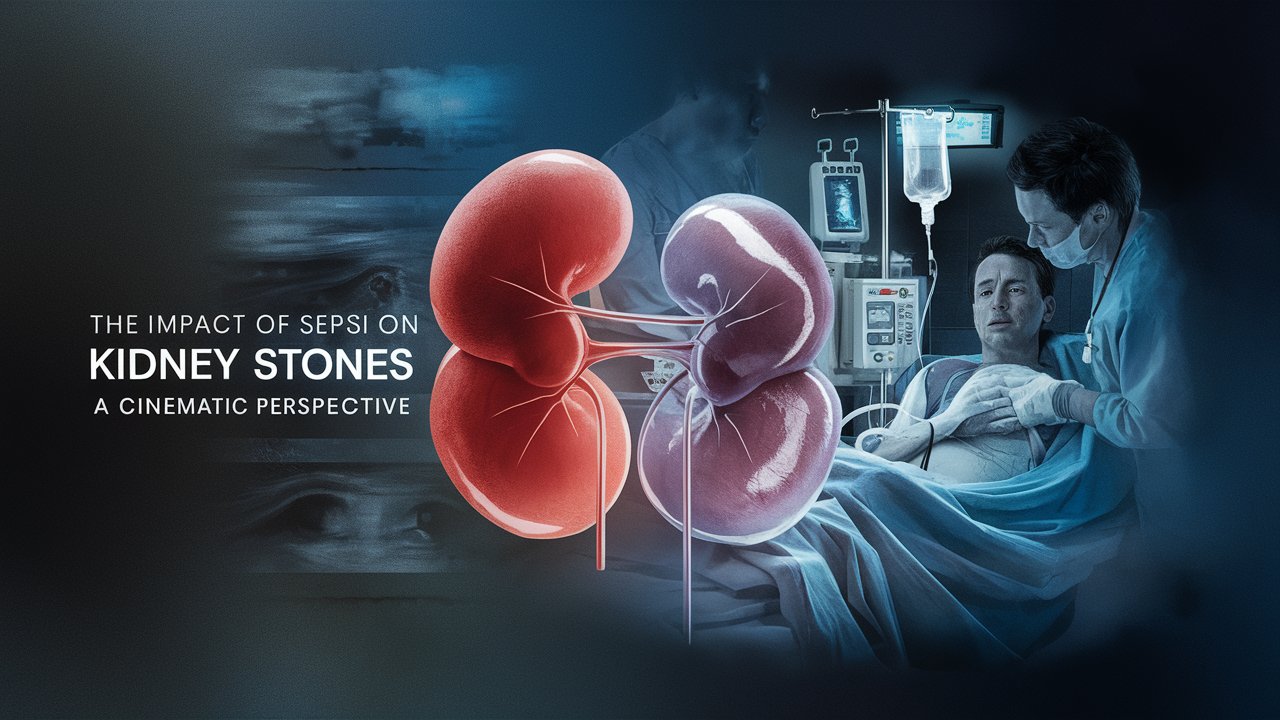How Common Is Sepsis with Kidney Stones? Symptoms, Causes, Diagnosis, and Treatment:

Table of Contents
Kidney stones are hard deposits formed in the kidneys from minerals and salts. They vary in size and can be as small as a grain of sand or as large as a golf ball. The main types of kidney stones include:
- Calcium Stones: The most common type, primarily made of calcium oxalate or calcium phosphate.
- Struvite Stones: Often form in response to an infection, composed of magnesium, ammonium, and phosphate.
- Uric Acid Stones: Form in urine that is too acidic and are linked to gout or high-protein diets.
- Cystine Stones: Rare, caused by a genetic disorder that leads to high levels of cystine in the urine.
Definition of Sepsis
Sepsis is a life-threatening condition that arises when the body’s response to an infection causes widespread inflammation. This can lead to tissue damage, organ failure, and death. Sepsis can result from bacterial, viral, or fungal infections and progresses through stages:
- Septicemia: The presence of bacteria in the bloodstream.
- Severe Sepsis: Sepsis with associated organ dysfunction.
- Septic Shock: A severe form of sepsis with persistent low blood pressure despite fluid resuscitation.
Relevance and Importance
The link between kidney stones and sepsis is significant due to the potential for kidney stones to complicate infections and lead to sepsis. Kidney stones can obstruct urinary flow, making it easier for infections to develop and spread. Understanding this connection is crucial for effective management and prevention of severe outcomes.
Types and Categories
Kidney Stones
- Calcium Stones: These are the most prevalent and are often related to high calcium levels in the urine. They can cause severe pain and may require medical or surgical intervention.
- Struvite Stones: Often associated with urinary tract infections (UTIs), these stones can grow quickly and cause obstruction. They are usually treated with antibiotics and stone removal procedures.
- Uric Acid Stones: Formed in acidic urine, these stones are often linked to dietary factors or metabolic disorders. Treatment may involve medications to alkalize the urine.
- Cystine Stones: These rare stones form due to a genetic disorder called cystinuria. Management involves increasing fluid intake and medications to prevent stone formation.
Sepsis
- Septicemia: Initial stage where bacteria are present in the blood, leading to systemic infection.
- Severe Sepsis: Characterized by organ dysfunction or tissue hypoperfusion, indicating that the infection has become more serious.
- Septic Shock: The most severe form, involving persistent hypotension despite fluid resuscitation, often requiring intensive care.
Symptoms and Signs
Symptoms of Kidney Stones
- Pain: Severe pain in the flank, back, or abdomen, often radiating to the groin. The pain can fluctuate in intensity as stones move.
- Hematuria: Blood in the urine, which may appear pink, red, or brown.
- Nausea and Vomiting: Often accompany severe pain and can be a response to the body’s stress.
- Frequent Urination and Pain During Urination: Increased urge to urinate or discomfort during urination can occur if stones are irritating the urinary tract.
Symptoms of Sepsis
- Fever or Hypothermia: High body temperature or abnormally low temperature.
- Rapid Heart Rate: Increased heart rate as the body responds to infection.
- Rapid Breathing: Increased respiratory rate due to the body’s response to inflammation and infection.
- Confusion or Disorientation: Changes in mental status due to the body’s response to sepsis.
- Extreme Fatigue: Overwhelming tiredness and weakness.
Symptoms of Sepsis Secondary to Kidney Stones
Kidney stones can lead to sepsis by causing urinary tract infections (UTIs) or obstructive uropathy. Symptoms may overlap with those of kidney stones but may include:
- Fever and chills: Indicative of infection spreading.
- Severe pain: More intense and persistent compared to typical kidney stone pain.
- Confusion or altered mental status: Can signal progression to sepsis.
Causes and Risk Factors

Kidney Stones
- Genetic Predisposition: Family history can increase the likelihood of developing kidney stones.
- Diet and Dehydration: Low fluid intake and high consumption of certain foods (e.g., those high in oxalates or salt) can contribute to stone formation.
- Medical Conditions: Conditions like hyperparathyroidism or metabolic disorders can predispose individuals to kidney stones.
Sepsis
- Infection Sources: Sepsis can arise from various infections, including those of the lungs, abdomen, urinary tract, or skin.
- Compromised Immune System: Individuals with weakened immune systems due to conditions like HIV, cancer, or diabetes are at higher risk.
- Chronic Diseases: Diseases such as diabetes, cancer, and chronic kidney disease can increase the susceptibility to sepsis.
Risk Factors for Sepsis with Kidney Stones
- Urinary Tract Infections (UTIs): Kidney stones can lead to UTIs, which may progress to sepsis if not treated promptly.
- Obstruction or Stasis: Stones can cause urinary obstruction, leading to infection and potentially sepsis.
- Diabetes and Other Conditions: Chronic conditions like diabetes can exacerbate the risk of both infections and sepsis.
Diagnosis and Tests
Diagnosing Kidney Stones
- Medical History and Physical Examination: Initial assessment includes reviewing symptoms and physical examination to locate pain and assess overall health.
- Imaging Tests:
- Ultrasound: Non-invasive and effective for detecting stones and assessing kidney function.
- CT Scan: Provides detailed images and helps identify stone size and location.
- X-Ray: Less commonly used but can help visualize certain types of stones.
- Urinalysis: Tests for blood, crystals, and signs of infection in the urine.
Diagnosing Sepsis
- Blood Cultures: To identify the presence of bacteria or other pathogens in the blood.
- Complete Blood Count (CBC): To assess white blood cell count and other indicators of infection.
- Lactate Levels: Elevated lactate can indicate tissue hypoxia and severe sepsis.
- Other Diagnostic Tests: May include imaging or additional tests based on suspected infection source.
Diagnosing Sepsis Secondary to Kidney Stones
- Combining Diagnostic Approaches: Integration of kidney stone imaging and sepsis diagnostic tests to determine the source and impact of the infection.
- Identifying Infection Sources: Focus on detecting any UTIs or other infections related to the presence of kidney stones.
Treatment Options
Treatment for Kidney Stones
- Medications:
- Pain Relievers: Non-steroidal anti-inflammatory drugs (NSAIDs) or acetaminophen for pain management.
- Alpha-Blockers: To relax the muscles in the ureter and facilitate stone passage.
- Non-Surgical Procedures:
- Extracorporeal Shock Wave Lithotripsy (ESWL): Uses shock waves to break stones into smaller fragments.
- Ureteroscopy: Involves passing a thin tube through the urethra and bladder to remove or break up stones.
- Surgical Options:
- Percutaneous Nephrolithotomy: Minimally invasive surgery to remove large stones via a small incision in the back.
- Open Surgery: Rarely used, reserved for complex cases where other methods are ineffective.
Treatment for Sepsis
- Antibiotic Therapy: Broad-spectrum antibiotics are administered initially, with adjustments based on culture results.
- Intravenous Fluids and Medications: To maintain blood pressure and organ function.
- Supportive Care: Includes oxygen therapy, vasopressors for blood pressure support, and monitoring in an intensive care unit if needed.
Managing Sepsis Secondary to Kidney Stones
- Coordinated Treatment Approach: Address both the kidney stones and the sepsis through a combination of urological and infectious disease treatments.
- Addressing Both Conditions: Ensure appropriate management of kidney stones to prevent further infections and sepsis.
Preventive Measures
Preventing Kidney Stones
- Dietary Modifications: Reducing intake of salt, oxalates, and proteins while increasing fluids.
- Increasing Fluid Intake: Aim for 8-10 glasses of water daily to dilute urine and prevent stone formation.
- Medications: Prescribed to prevent recurrence based on stone type and underlying conditions.
Preventing Sepsis
- Vaccinations: For infections that can lead to sepsis, such as pneumococcus and influenza.
- Prompt Treatment of Infections: Addressing infections early to prevent progression to sepsis.
- Proper Hygiene and Wound Care: To reduce infection risk and prevent complications.
Preventing Sepsis in Patients with Kidney Stones
- Monitoring and Managing UTIs: Regular follow-ups and prompt treatment of urinary infections.
- Regular Check-Ups: For individuals with kidney stones to monitor for potential complications and infections.
Personal Stories or Case Studies
Case Study 1: Kidney Stones Leading to Sepsis
John, a 55-year-old male, developed severe kidney stones that led to an obstructive UTI. Despite initial treatments, the infection progressed to sepsis, requiring intensive care and surgical intervention to remove the stones. His case highlights the importance of early intervention and monitoring for potential complications.
Case Study 2: Preventing Sepsis in a Patient with Kidney Stones
Lisa, a 42-year-old woman with a history of kidney stones, took proactive measures including regular check-ups and prompt treatment for UTIs. Her case demonstrates the effectiveness of preventive strategies in avoiding sepsis and maintaining overall health.
Expert Insights
Quote from Urologist
Dr. Sarah Green, a urologist, emphasizes the critical nature of managing kidney stones to prevent complications: “While kidney stones are often manageable, they can lead to serious infections if left untreated. Regular monitoring and timely treatment are essential to prevent sepsis.”
Quote from Infectious Disease Specialist
Dr. Michael Lee, an infectious disease specialist, advises on sepsis management: “Sepsis requires rapid identification and intervention. In patients with kidney stones, managing urinary tract infections effectively can prevent the escalation to sepsis.”
Summary of Key Points
Sepsis associated with kidney stones is a serious condition that requires comprehensive management. Understanding the connection between kidney stones and sepsis, recognizing symptoms, and implementing effective treatments and preventive measures are crucial for improving patient outcomes.
Call to Action
If you or someone you know has kidney stones or is at risk for sepsis, seek medical advice promptly. Regular check-ups, timely treatment of infections, and lifestyle modifications can help manage both conditions and prevent severe complications.
- Also Read :
- Discover the Best Kettlebell Workouts for All Levels
- Improve Your Swing with Golf Flexibility Exercises
- Core and Flexibility Workout for a Stronger Body
- Zone 2 Cardio: Benefits, Heart Rate Zones, and Training Guide
FAQ’S:
How can kidney stones lead to sepsis?
Kidney stones can lead to sepsis primarily through urinary tract infections (UTIs). When stones obstruct the flow of urine, it creates an environment conducive to bacterial growth.
What are the signs that kidney stones might be causing sepsis?
Signs that kidney stones might be causing sepsis include severe pain in the flank or abdomen, fever, chills, rapid heartbeat, rapid breathing, and confusion.
How can I prevent sepsis if I have kidney stones?
To prevent sepsis if you have kidney stones, focus on managing your kidney stones effectively and preventing urinary tract infections. This includes:
Increasing Fluid Intake: Helps to flush out stones and prevent infection.
Timely Treatment of UTIs: Seek prompt treatment if you experience symptoms of a UTI.
Regular Monitoring: Follow up with your healthcare provider to manage kidney stones and avoid complications.
Adhering to Treatment Plans: Whether it’s medication or procedures to remove stones, following medical advice helps in preventing infections and their progression to sepsis.

